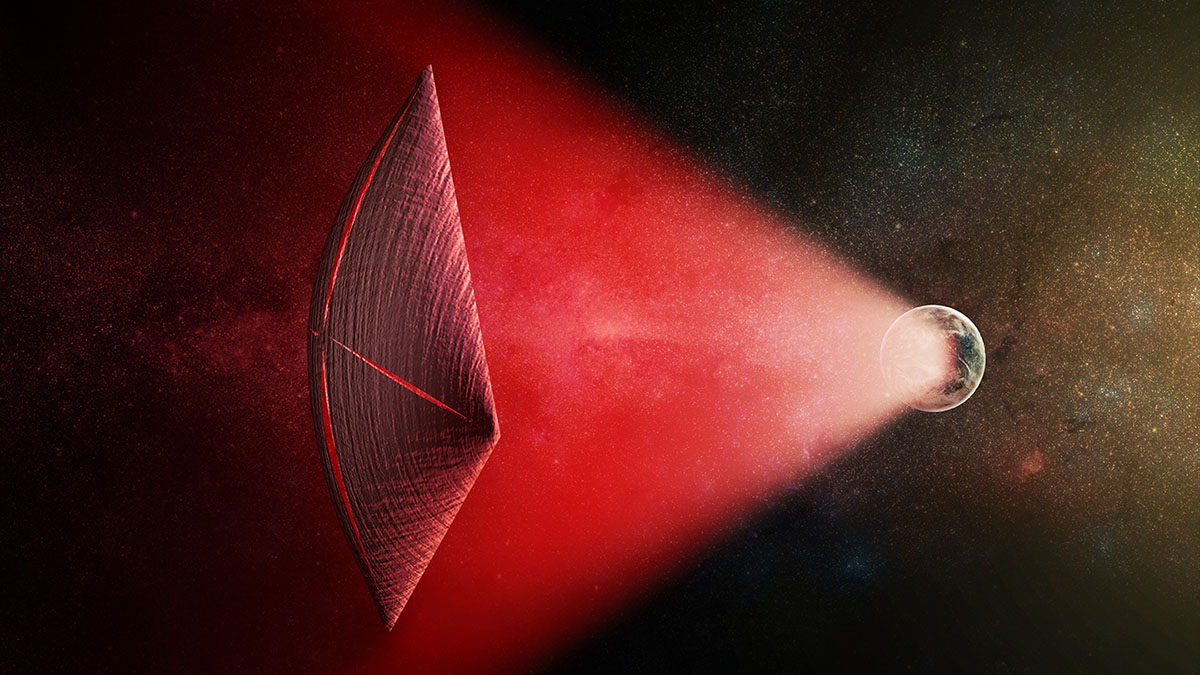across the universe in a lifetime. with a catch.

New Horizons is the fastest spacecraft launched so far by humans. After a gravity assist from Jupiter, it’s on a course to rocket past Pluto at 47,000 miles per hour. At that speed it would circle our world in a little under 32 minutes, make it to the moon in just five hours, reach Mars at its closest point in a bit over one month and get to our nearest stellar neighbor in… 87,633 years? Oh. Ok, maybe it’s not really all that fast in the grand scale of things. In fact, when it comes to space travel, it’s about as fast as a limping tortoise on sodium pentothal. But what if New Horizons could keep accelerating as close as was physically possible for it to get to the speed of light? A 2005 paper on the subject argues that it could cross half the visible universe in half a century. And of course, since I’m writing about this paper, you know there’s some sort of major catch to the whole thing…
When people talk about exploring space, their greatest frustration is that the vast distances involved and how slow our spacecraft travel and could travel according to the laws of physics, make exploring any notable part of the universe in a single human lifetime impossible. In a straight-line, arithmetical projection, things look very bleak for future interstellar explorers. Even at relativistic speeds, it would take hundreds, if not thousands and thousands of years to get to their destinations. However, things don’t work in straight-line projections when an object is traveling at relativistic speeds according to Einstein’s theory of special relativity. The faster an object moves, the slower time flows for it relative to stationary or sluggish observers. The phenomena is known as a time dilation and we know it really happens after experiments involving atomic clocks and airplanes.
If you’ve ever flown in an airplane across a good stretch of land, you’re a tiny fraction of a second younger than you should be if you traveled by car at sea level. Astronauts experience even greater dilations. Now, all that is taking place at the speed of a napping snail as far as the universe is concerned. So to make things a little bit more interesting, physicist Jeremy Hoyl decided to ratchet up both the speed and the timeline to see what will happen if we launch a manned spacecraft able to accelerate by 9 meters every second well into the territory of relativistic speeds and keep on going. His results show that when the astronauts age by half a century, they would cover almost 15 billion light years. For us, their trip would take eons and the Sun would consume our world before shriveling into a white dwarf. On our hypothetical spacecraft however, the astronauts would be a good deal older, but still very much alive and unaware of how fast time passed for the slowpokes on Earth.
By accelerating at a constant 9 m/s/s, not only would their craft be incredibly fast, it would also be a very good simulation of our planet’s gravity. The explorers could have showers, relax with a cup of hot coffee without the liquid floating into their faces as a boiling hot bubble, and the other little comforts of home. In just over a year, they would hit the speed of light. Computationally. In reality, even if we ignore how big the power source would need to be to keep firing for over a year, the spacecraft would be stopped by the interstellar medium. Usually, it’s just gas and dust scattered in extremely low densities over thousand of light years. However, when a ship tries to plow through this matter at a significant percentage of the speed of light, the sheer force with which an ordinarily harmless speck of dust hits the hull is multiplied exponentially. And as the ship barrels on through, it’s basically sandblasted away. Not a good start for a trip across the cosmos.
The numbers get even worse if the spacecraft has to cross a solar system. Bands of dust around stars’ inner solar systems would vaporize a relativistic rocket going just 10% the speed of light. In the craft’s control room, the crew would never even know what hit them before meeting their high friction doom. Using time dilation to our advantage isn’t a new idea by any stretch of the imagination, but Hoyl does something innovative with it by showing us how over a long period of time, the phenomenon can give us an amazing return on investment. Still, what’s the practical use of taming special relativity to our advantage if the spacecraft wouldn’t survive the trip in the first place?
See: Heyl, J. (2005). The long-term future of space travel Physical Review D, 72 (10) DOI: 10.1103/PhysRev…





